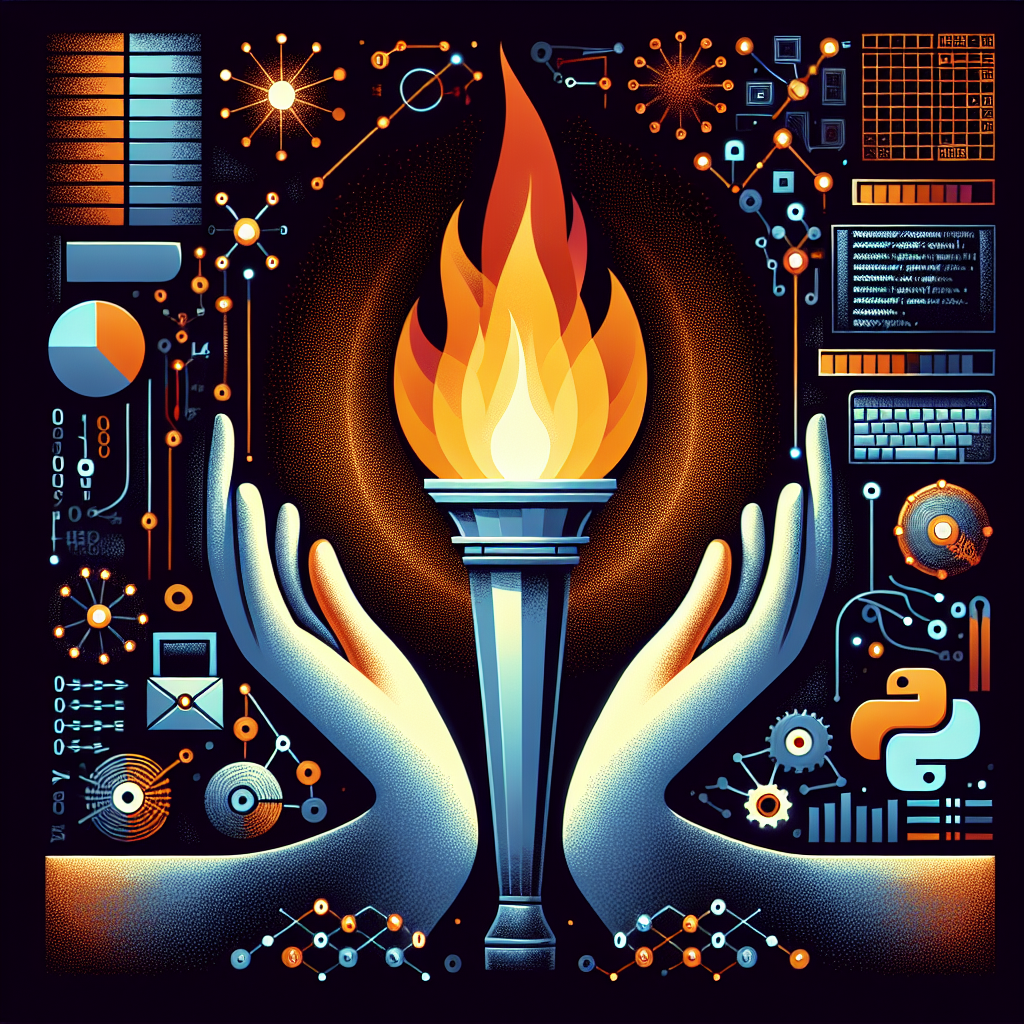PyTorch is an open-source machine learning library developed by Facebook’s AI Research lab. It is widely used for building deep learning models and has become one of the most popular frameworks in the field of artificial intelligence. In this tutorial, we will provide a step-by-step guide on how to get started with PyTorch.
Why PyTorch?
PyTorch is known for its flexibility and dynamic computation graph, which makes it easier to debug and experiment with different models. It also has a strong community support and a rich ecosystem of tools and libraries that can help you build powerful machine learning applications.
Setting up PyTorch
The first step in getting started with PyTorch is to install the library. You can install PyTorch using pip, a package manager for Python. Here is the command you can use to install PyTorch:
pip install torch torchvision
Creating a Simple Neural Network
Now that you have installed PyTorch, let’s create a simple neural network using the library. Here’s a basic example of how to create a neural network with a single hidden layer:
“`python
import torch
import torch.nn as nn
# Define the neural network architecture
class SimpleNN(nn.Module):
def __init__(self):
super(SimpleNN, self).__init__()
self.fc1 = nn.Linear(784, 128)
self.fc2 = nn.Linear(128, 10)
def forward(self, x):
x = x.view(x.size(0), -1)
x = torch.relu(self.fc1(x))
x = self.fc2(x)
return x
“`
Training the Neural Network
After defining the neural network architecture, you can train the model on a dataset. PyTorch provides tools for loading and manipulating datasets, as well as built-in optimization algorithms for training the model. Here’s an example of how to train the simple neural network we defined earlier:
“`python
import torch.optim as optim
import torchvision.datasets as datasets
import torchvision.transforms as transforms
# Load the MNIST dataset
train_dataset = datasets.MNIST(root=”./data”, train=True, download=True,
transform=transforms.ToTensor())
train_loader = torch.utils.data.DataLoader(train_dataset, batch_size=64, shuffle=True)
# Instantiate the neural network and optimizer
model = SimpleNN()
optimizer = optim.SGD(model.parameters(), lr=0.01)
# Train the model
for epoch in range(10):
for batch_idx, (data, target) in enumerate(train_loader):
optimizer.zero_grad()
output = model(data)
loss = nn.CrossEntropyLoss()(output, target)
loss.backward()
optimizer.step()
“`
Conclusion
Congratulations! You have now completed a hands-on tutorial for getting started with PyTorch. You have learned how to install PyTorch, create a simple neural network, and train the model on a dataset. PyTorch’s flexibility and powerful features make it a great choice for building deep learning models. Keep exploring and experimenting with PyTorch to unleash its full potential!
FAQs
What is PyTorch?
PyTorch is an open-source machine learning library developed by Facebook’s AI Research lab. It provides tools for building deep learning models and has a dynamic computation graph that makes it easy to experiment with different architectures.
Can I use PyTorch for natural language processing tasks?
Yes, PyTorch is widely used for natural language processing tasks such as text classification, sentiment analysis, and machine translation. It provides tools for working with text data and pre-trained models that can be fine-tuned for specific tasks.
Is PyTorch better than TensorFlow?
Both PyTorch and TensorFlow are popular deep learning frameworks with their own strengths and weaknesses. PyTorch is known for its flexibility and ease of use, while TensorFlow is widely used in production environments and has a strong ecosystem of tools and libraries. The choice between the two frameworks depends on your specific requirements and preferences.
Quotes
“PyTorch is a powerful tool for building and training deep learning models. Its flexibility and dynamic computation graph make it a popular choice among researchers and practitioners in the field of artificial intelligence.”
#HandsOn #Tutorial #Started #PyTorch


